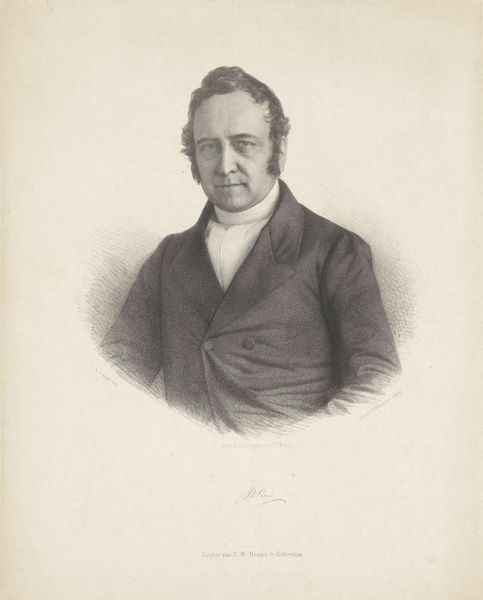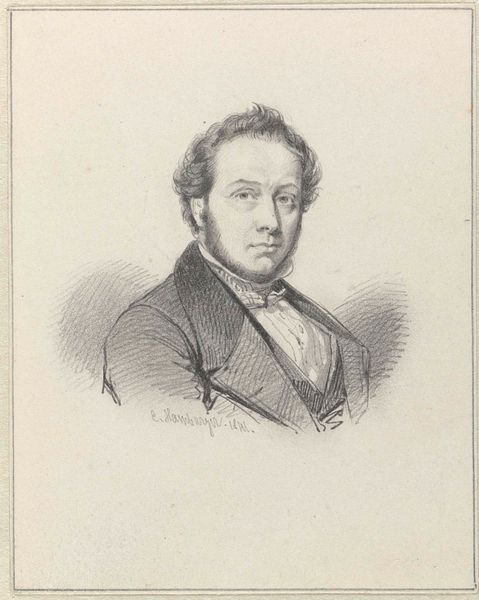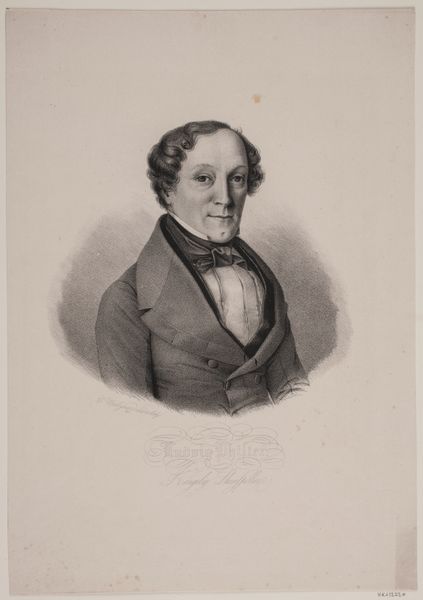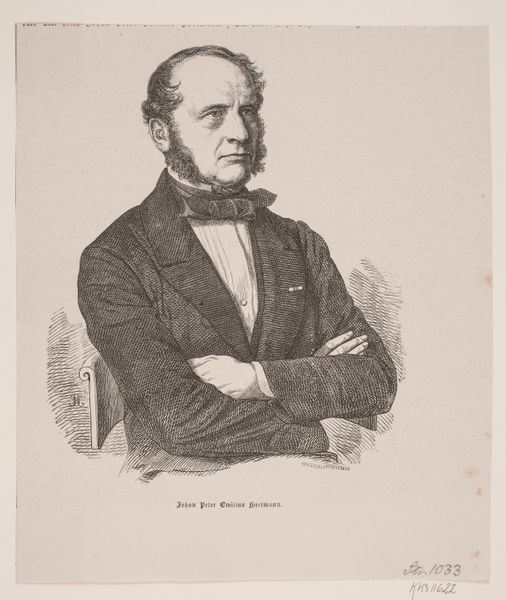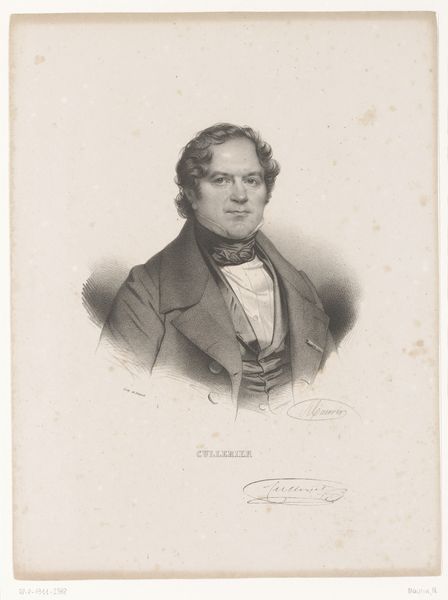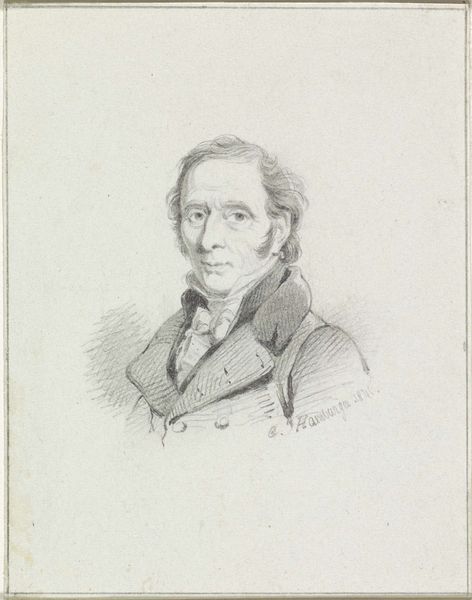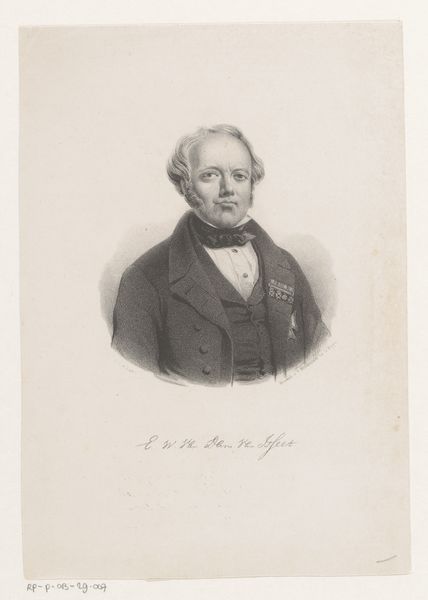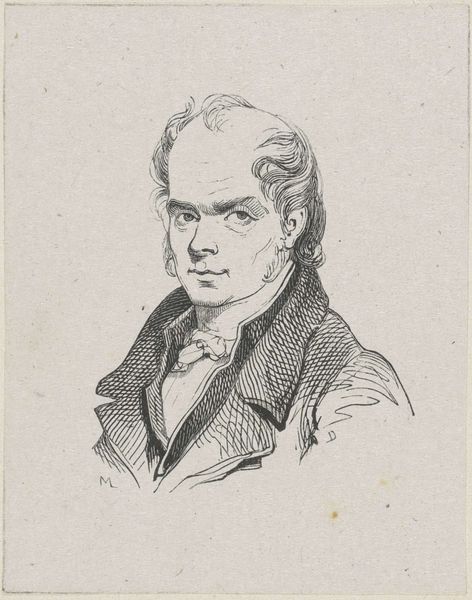
drawing, graphite
#
portrait
#
pencil drawn
#
drawing
#
charcoal drawing
#
pencil drawing
#
romanticism
#
graphite
#
portrait drawing
Dimensions: height 340 mm, width 274 mm
Copyright: Rijks Museum: Open Domain
This is a portrait of Jan Willem Pieneman, made by Johann Wilhelm Kaiser I in the 19th century. The technique used here is a printmaking method known as lithography. With lithography, the artist draws on a flat stone or metal plate with a greasy substance. The stone is then treated so that ink adheres only to the drawn areas. When paper is pressed against the inked stone, an image is transferred. The resulting print has a distinctive texture, with subtle tonal variations created by the varying pressure of the artist's hand. Notice how the lithographic process captures the details of Pieneman's features and clothing. The cross-hatching creates a sense of depth and volume. Lithography was a relatively accessible method of printmaking that allowed for wider distribution of images. This democratization of image-making was an important development in the 19th century, reflecting shifts in labor, politics, and consumption. So next time you encounter a print, remember the artist's hand, the properties of the materials, and the social context in which it was made.
Comments
No comments
Be the first to comment and join the conversation on the ultimate creative platform.


